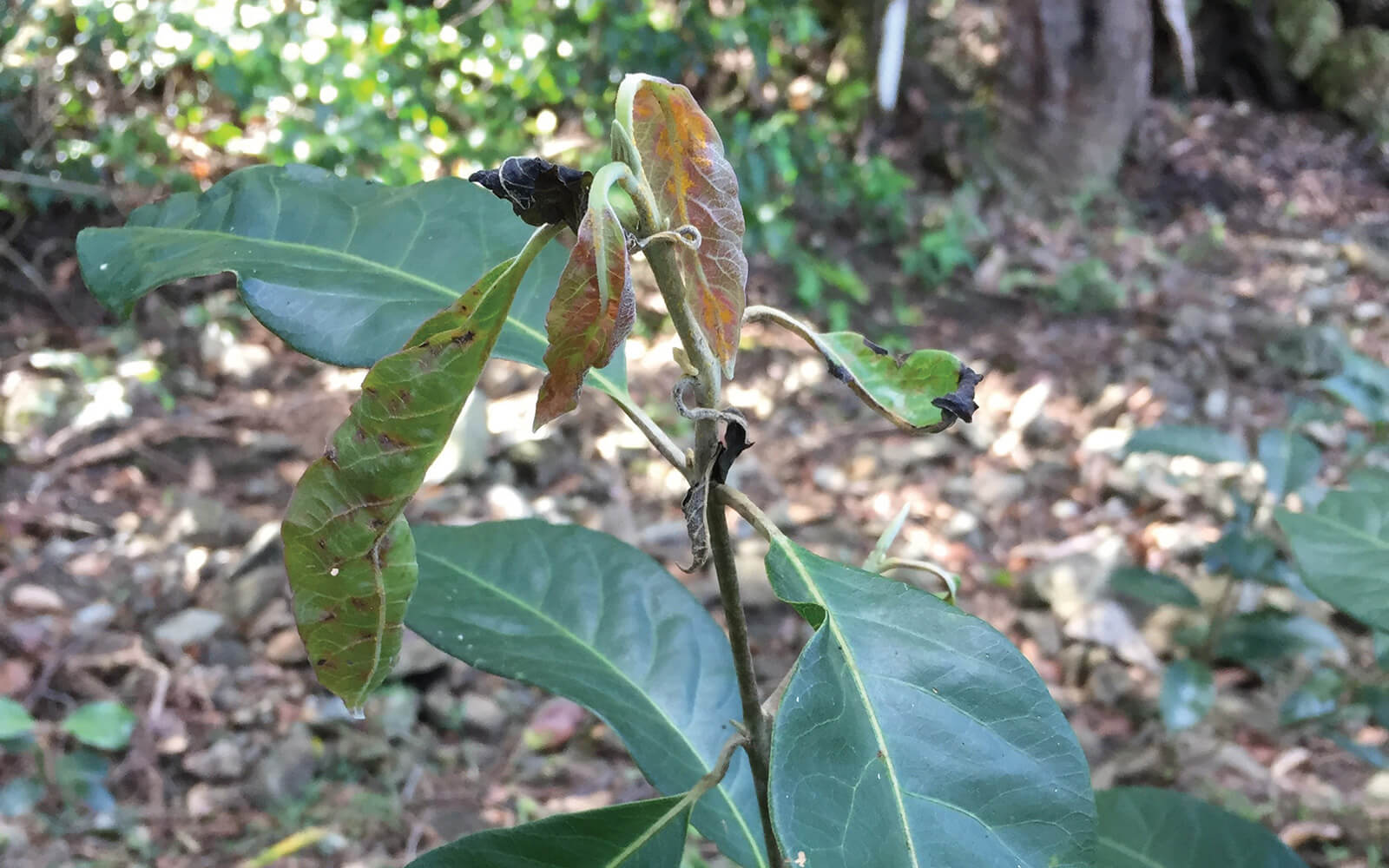The article about Myrtle Rust on the final page of the August newsletter by Nick Swanson was of interest. Highly susceptible host plants like Native Guava (Rhodomyrtus psidioides) are likely to become reinfected with Myrtle Rust unless regularly treated with fungicide. This is primarily due to the fact that the fungus attacks the new growing shoots and maintaining optimum levels of fungicide can be a challenge. Some years ago, we tested fungicide control on Rhodamnia rubescens and found that monthly fungicide application was required to maintain control of the disease. This of course can vary depending on weather patterns with Myrtle Rust more active during wetter years. A student from Macquarie Uni has also looked at the use of fungicide on Rhodamnia rubescens and Rhodomyrtus psidioides to control the disease with a similar treatment regime.

While not published, we found that Bayfidan® alone was not that effective when looking to control Myrtle Rust on Melaleuca quinquenervia. We used a combination Bayfidan® (triadimenol) + Zaleton® (tebuconazole) with much better results. However, it didn’t eliminate the fungus, just reduced the incidence and severity levels in comparison to untreated trees. Another study tested a range of fungicides on two New Zealand Myrtaceae species. It found that the most effective fungicides were those that included a demethylation inhibitor and strobilurin mix, notably tebuconazole/trifloxystrobin (Scorpio®) and cyproconazole/azoxystrobin (Amistar® Xtra).
I would recommend that people don’t use a single fungicide regularly. Rotation of fungicides containing different active ingredients is recommended to ensure fungicide applications remain effective. The last thing we want is to facilitate fungicide resistance in the rust population through over-use of a single fungicide. Below are recent papers that examine the efficacy of different fungicides.
Dr Geoff Pegg
Forest Pathologist
Dept of Agriculture and Fisheries
References for further reading
Carnegie AJ, Kathuria A, Pegg GS, Entwistle P, Nagel M, Giblin FR (2016). Environmental impact of the invasive rust Puccinia psidii on Australian native Myrtaceae. Biological Invasions 18:127-144.
Fernandez-Winzer L, Berthon KA, Entwistle P, Manea A, Winzer N, Pegg G, Carnegie AJ & Leishman MR (2020). Direct and indirect community effects of the invasive plant pathogen Austropuccinia psidii (myrtle rust) in eastern Australian rainforests. Biological Invasions 22:2357–2369.
Pathan AK, Cuddy W, Kimberly MO, Adusei-Fosu K, Rolando CA & Park RF (2020). Efficacy of fungicides applied for protectant and curative activity against myrtle rust. Plant Disease 104:2123-2129.

Hi Geoff,
Are you still involved with controlling Myrtle Rust?
I am currently working on a recovery program for Gossia gonoclada, and looking at treating individual specimens with a fungicide to combat this disease.
Do you know of anyone currently doing trials on the control of this disease in natural areas using fungicides that are available?
I was recommended to use a product called Triadimenol, however after reading this article I will look into using the other fungicides you mention in conjunction. I was curious to see if anyone else is doing the same and what results they are achieving.
Thank you for your time.
Hi Rusty. You may be interested in this UQ research project https://www.uq.edu.au/news/article/2022/12/scientists-tackle-rusty-plant-threat#:~:text=Developed%20in%20collaboration%20with%20Department,bushland%2C%20home%20gardens%20and%20nurseries.